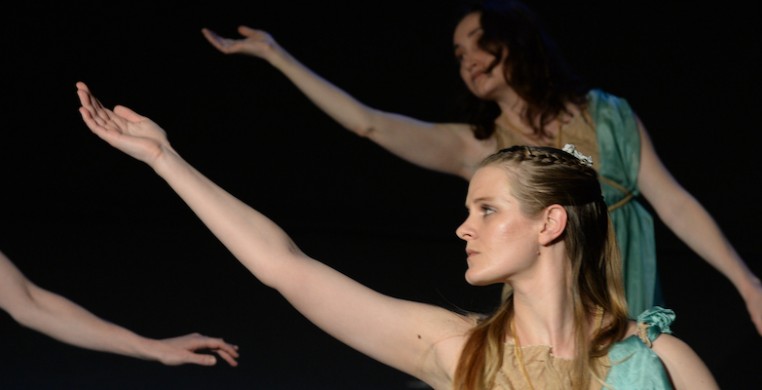Author’s note: The story I wanted to share was one of personal loss, and how dance helped me move through a period of grieving. Now, with the emergence of the COVID-19 pandemic, we are sadly in a time where we are collectively and personally faced with losses of many kinds. I share my story, though, with a feeling of hope for our collective ability to move through this to another place. Grief is universal. And healing is as well.
Two years ago, I lost my life partner. I’d never been through such a close, heart-wrenching loss. There was no guide to take me through the immediate, strangling feeling of loss to some kind of different place. However, one thing I knew in my gut was that I needed to keep going to my weekly Duncan dance class. The class had always felt essential to my sense of well-being, and now that well-being felt far away, it was my tether.
For months, tears streamed down my face in every class—tears of sadness, yes, but over time, the tears felt more like an acknowledgement, and ultimately transformation of my darkest moments. This experience of transformation prompted deep reflection on what about the Duncan technique and class experience was so uniquely powerful for me.
The philosophy of Isadora Duncan—and the way it is interpreted and taught by Jennifer Sprowl, a third generation Duncan dancer— is to create a safe and gentle space to face this journey through the landscape of grief. More than a technique (though it most certainly is one!), Duncan thought of dance as an expression and celebration of life, and of all the beauty and turmoil that it entails.
What are the core elements of this class that made it so helpful to my healing process? Perhaps it is the sense of community and heart connection to the other dancers that is fostered by group improvisations, or the frequent invitations to find a way to interact with other dancers when exploring a movement sequence. Perhaps it is the technique’s deep resonance with music as the muse that evokes the movement, rather than a series of counted steps timed to music. It could be the way that imagination is invoked, as grieving has a narrative written by the imagination. Or it might simply be the breadth of the movement: the curves, bends, sways, opening and expanding; the breath and the sense of momentum that continues even as the body is still; a physical means of moving energy through the body and opening blockages; the particular focus on opening the heart center (known in Duncan work as the “solar plexus”); the “universal gesture” that moves energy from earth, through the self and to the heavens and broadens my perspective from that of an isolated individual in pain to part of a much larger wondrous universe. Likely, it is all these things and therefore more coalescing to transform grief in fundamental and powerful ways.
Grief is a landscape
I dance my way through it
At first the terrain is monochrome
I can’t imagine anything but sadness
At times I make myself too busy to notice its features
Or too numb to feel its contours
Then, unexpectedly, stumbling upon those spaces where sadness and joy merge
A skip, an outstretched arm, a gesture to the earth, an opening of the back
I dwell, for just a moment, in those peaks and valleys
Where movement sidesteps my busy thinking brain
and pushes me without recourse directly into the realm of deep feeling
Inside, something shifts.
--
Leslie Fiedler is not a professional dancer. She fell in love with Isadora Duncan's movement in college in Florida and happily stumbled into Chicago's only Duncan dance class two decades later. For the past eight years, she's been a regular member of the Duncan class, a student of the art form and occasional performer with Duncan Dance Chicago.
Our Readers Write is a See Chicago Dance series in which we turn the keyboard over to you, and let readers share their thoughts on anything related to dance in Chicago. Previously, readers have shared their own personal journeys, interesting stories about hallmark figures in Chicago dance, and other essays and stories that span the gamut of what dance is about.

